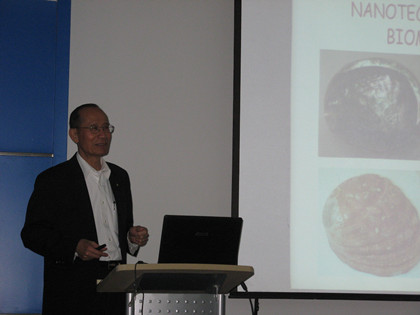Prof. Ken P. Chong from George Washington University visited the Center for Smart Materials and Structures (CSMS).

The Title
1. Applied Research in George Washington University;
2. Converging Technologies and Multi-scale Mechanics;
3. Nano-technology in Civil Infrastructure;
4. Nano-technology in Civil Engineering Materials.
Abstract
Led by NSF over thepast decade, converging interdisciplinary areas of nanotechnology,biotechnology, information technology, and cognitive science (NBIC) offer thepotential of improving human lives as well as society well-being andproductivity. Nanotechnology is a very efficient way in the creation of newmaterials, devices and systems at the molecular level. It requires simulationin the multi-scale mechanics to bridge the molecular level to the systemslevel. Since nanotechnology has progressed to the point where translational andcommercial development are possible, there is a need to facilitate similarprogress in those of converging technologies. Research and challenges in NBICneed multi-scale mechanics and related areas.
Nanoscience and engineering is one of the frontiers in transformative andtranslational research. In an interview with the author in 2004 at RiceUniversity, the late Nobel laureate Rick Smalley indicated that one of the mostchallenging problems is the integration and interface between wet (biological)and dry (structural) materials. More recently according to M. Roco et al newresearch on the building blocks of matter at the nanoscale isresulting indiscoveries in biological- information- and cognition-based disciplines. Suchsynergism is evident in knowledge creation in most emerging and convergingtechnologies. Mechanics and multi-scale modeling are essential to scale up fromnano to macro system levels. In the cognition area major efforts are to understandthe structure, functions and enhancement of the human mind.